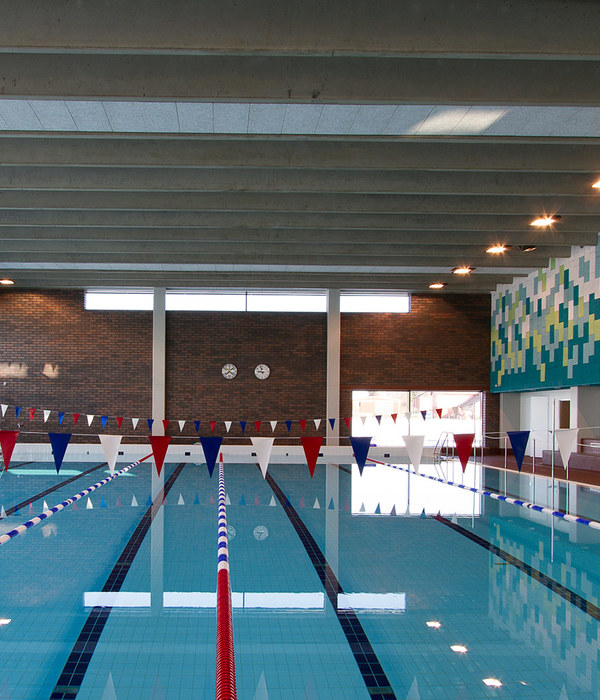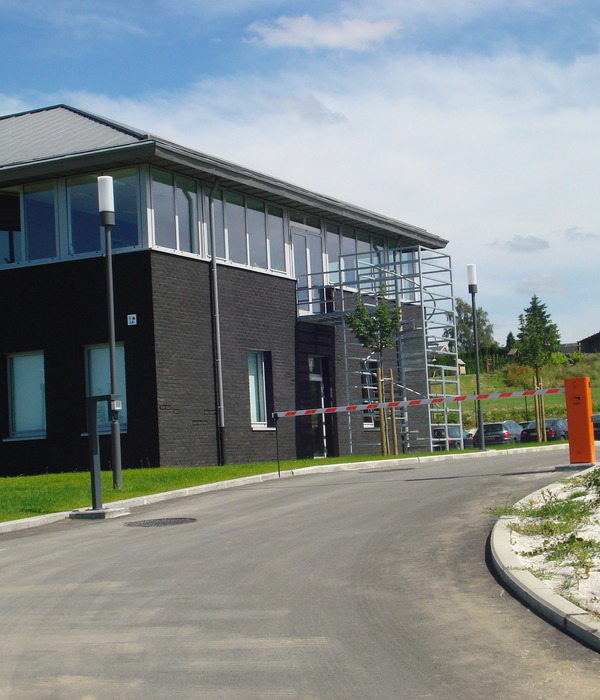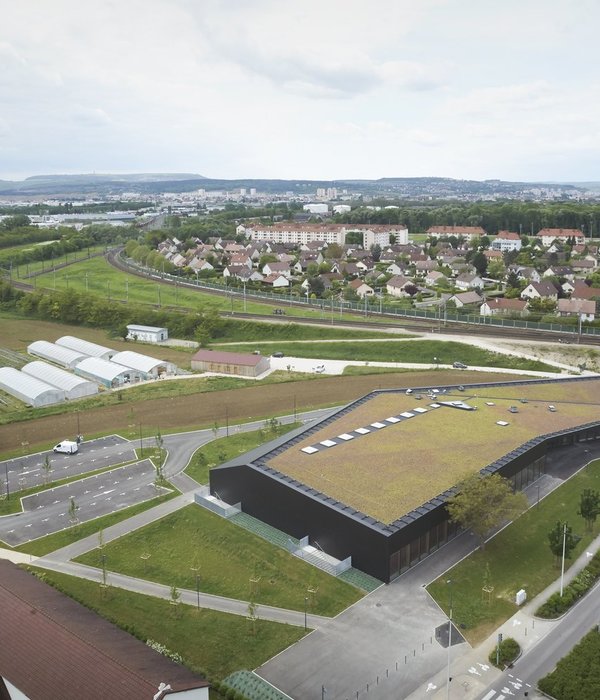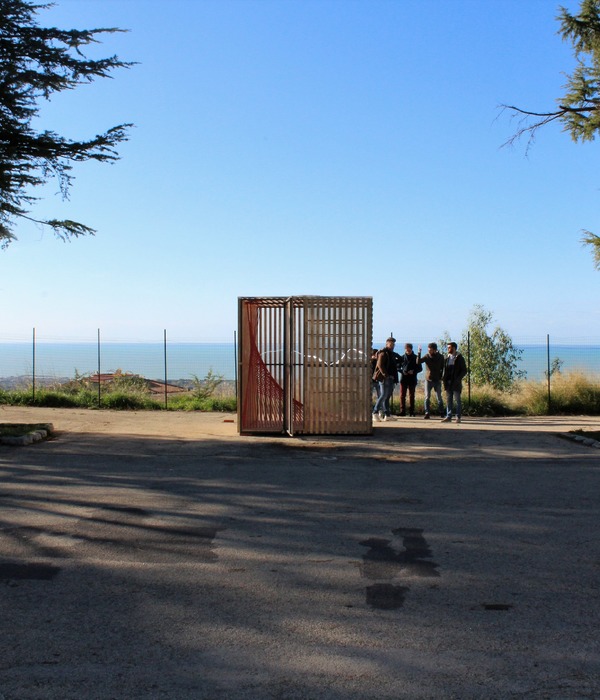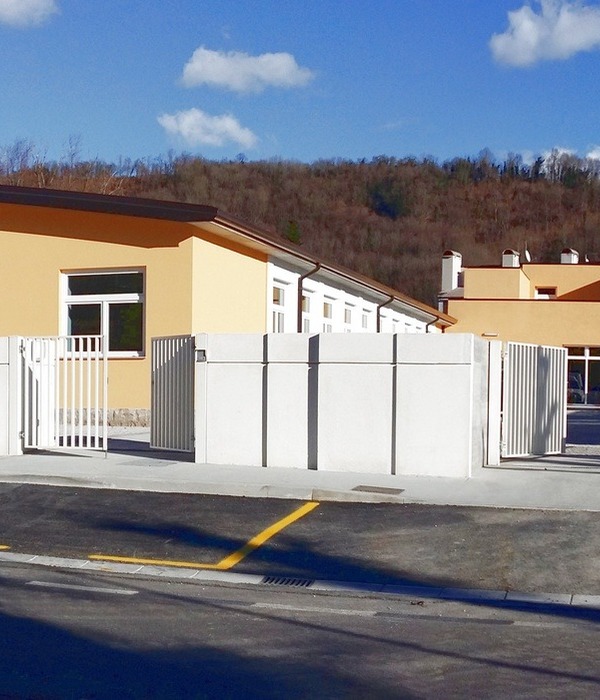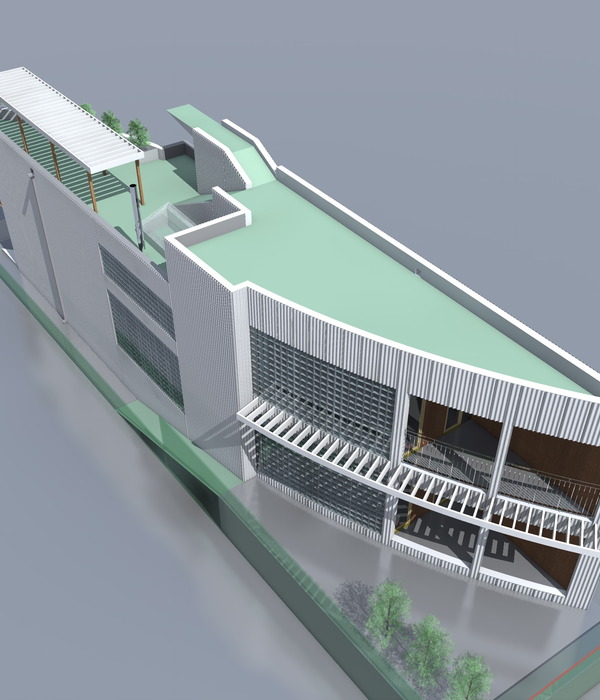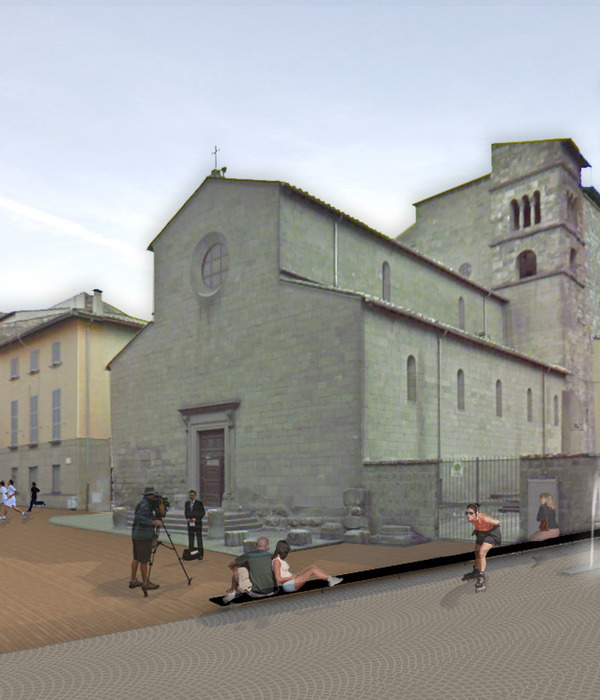拥有两栋舞动的大楼,宽敞的公共屋顶花园和世界级的剧场,Duett Düsseldorf大剧院将成为这座德国城市新的文化中心。项目位于杜塞尔多夫市中心的核心位置,业主CENTRUM GROUP委托Snøhetta为城市设计一座新的剧院和文化中心。以Duett Düsseldorf为名,新的剧院在Hofgarten公园、莱茵河和繁忙的Königsallee大街之间建立起了清晰的连接,旨在创造一个面向公众的集会场所。项目包含最新型的剧院,酒店,餐厅和咖啡厅,办公空间以及居住单元,希望为杜塞尔多夫的居民提供一个共享的文化中心。
新的剧院将取代Heinrich-Heine-Allee 16A上原有的剧场,后者的楼层布局已经无法满足当今国际水准的剧院设施需求。因此设计计划向北扩建一片面积为1350平米的综合性侧舞台,并在东侧加建1455平米的新空间,形成一个更加宽敞的前厅。为了最小化对Hofgarten公园的影响,设计限制了建筑一层的规模,将可以配置在上层的功能都移动到了上方。
With two iconic dancing towers, a generous public roof garden and a world-class opera house, Duett Düsseldorf is set to give the German city a new cultural epicenter. Situated in the heart of Düsseldorf city center, Snøhetta has been commissioned by CENTRUM GROUP to propose a new opera house and cultural hub for the city. Dubbed Duett Düsseldorf, the new opera house creates clear connections to the nearby Hofgarten park, the Rhein river and the popular Königsallee street, aiming to create a publicly accessible space that brings people together. With a state-of-the-art opera house, a hotel, restaurants and cafés, office spaces and residential units, the project aims to create a shared cultural epicenter for the people of Düsseldorf.
The new opera house will replace the existing one on Heinrich-Heine-Allee 16A, as the current floor plan is not suited to facilitate a well-functioning opera house at an international level. The proposal therefore suggests a 1.350 square meter expansion to the North for a fully integrated side stage and enough space for back-of-house functions and additional program, and a 1.455 square meter expansion to the East to facilitate a larger foyer. To minimize the footprint into the Hofgarten park, the program at ground level is limited and functions that can be placed in the higher-up floors have been lifted.
▼项目外观,external view of the project ©MIR
与葱郁的、历史悠久的Hofgarten公园相接,剧院周边的景观设计将重点放在了如何将人流从城市森林引向剧院前厅。弧形的景观重新组织道路系统,通过建设新的连桥加强与南侧Königsallee大街及西侧区域的连接
Bridging from the lush, historic Hofgarten park, the landscape design surrounding the opera house is developed with focus on the flow of people through an urban forest leading to the opera house’s foyer. The curved landscape reorganizes the road systems and strengthens the connection to Königsallee through a new bridge in the south and a connection to the West.
▼鸟瞰,剧院与公园相连,aerial view of the theater connected with the park ©Centrum/Snøhetta/Boomtown
从公园到达剧院的前厅和主入口,室内外的界限被模糊,使得前厅与公园融为一体。踏上作为明确分界的花岗岩地面,前厅内富有雕塑感的木制墙面透过十六米高的玻璃立面展现在人们面前。阳台从圆形核心筒中悬挑而出,以有机的形态营造出了一种空间现象,将垂直的墙壁转化到了水平的天空。从连接公园的森林一般的入口,穿过通透的玻璃外壳,到达木制核心筒,创造了一种私密、温暖而舒适的氛围,将游客迎接到剧院之中。
Approaching the foyer and main entrance from the park, the boundaries between indoors and outdoors are blurred, bringing the foyer and the park together. Walking on the clearly defined carpet of granite stone, a 16-meter-tall transparent glass façade reveals a sculptural wood wall within the foyer. With overhanging balconies stretching out from the circular core, the organically shaped wall creates a spatial phenomenon transitioning from a vertical wall to a horizontal sky. From the forest-like entrance from the park, through the transparent glass shell, the meeting with the wooden core creates an intimate, warm and comforting welcome to the opera house.
▼模糊的室内外界限和雕塑般的前厅木制墙面 blurred boundary between the interior and the outside, with view to the sculptural wooden wall in the foyer ©MIR
宽敞的楼梯间和坡道将人们从前厅带到四层的咖啡厅,这是水平悬挑体量的第一层,可以俯瞰前厅的主舞台。在该层的西北处,游客可以一瞥周边区域的雄伟景观。从咖啡厅游客可以看到剧院的彩排空间,包括合唱队和管乐团的彩排室。水平体量东侧巨大的芭蕾舞彩排空间两层通高,保证了充足的光照和良好的空间感受,同时由于所处楼层较高,带给人更好的安全感和私密感。如果需要的话,这些彩排空间也可以作为演出场所向观众开放。衣柜和较小的练习室也被设置在水平体量中,通过货梯与储藏室、乐池以及后场区域相连。四层和五层设有管理和剧院餐厅。
Generous staircases and ramps lead from the foyer up to a café on the fourth floor of the building – the first of three floors in a horizontal cantilevering volume topping off the foyer and main stage below. From the North-Western part of this horizontal level, visitors can get a first glimpse of the magnificent views of the surrounding area. From the café, visitors can see into the rehearsal spaces of the opera, including the choir and orchestra rehearsal rooms. The large ballet rehearsal space on the Eastern side of the horizontal volume is extended over two floors, ensuring good light conditions and a great sense of space, while also giving a sense of security and privacy by being placed on the higher floors. When appropriate, the rehearsal spaces can be opened up to the audience for performances. Wardrobes and smaller exercise rooms are also located on the horizontal volume, while spacious cargo lifts connect this program to storage rooms, the orchestra pit and the back-of-house areas. Administration and the opera canteen can also be found on the fourth and fifth floor.
▼前厅,foyer ©MIR
水平体量是一个重要的建筑元素,其中设置了约25000平米的剧院和酒店的混合设施,还包含公众可以进入的区域。设计希望通过它实现居民、游客、酒店住客、工作人员和艺术家之间的和谐共处,同时与公园、莱茵河以及天空建立联系。水平体量的顶部是一片向公众开放的屋顶景观空间,人们可以从这里欣赏城市和公园的美景。该公共空间面积为6000平米,可以直接通过电梯从前厅进入,如同一座拥有360度景观的绿色庭院。设计考虑了空间的灵活性和多功能性,使屋顶成为了举办文化活动、演出以及其他活动的理想空间。其他商业功能,如餐厅和咖啡厅与三个水平层相连,创造了一个富有吸引力的城市公共景点。
With approximately 25.000 square meters of mixed-use opera and hotel functions, as well as publicly accessible areas, the horizontal volume represents a significant architectural element. Aimed to build relationships and synergies between inhabitants, visitors, guests, employees and artists, it is also an element binding together the park, the Rhine and the sky. On the top of the horizontal volume, a publicly accessible roof landscape offers breathtaking views of the city and park. Directly accessible from the foyer with an escalator, the 6.000-square-meter public roof landscape appears as a green courtyard with an attractive 360-degree view. Designed for flexibility and multifunctional use, the roofscape is ideal for cultural events, performances and other activities. Other commercial functions such as restaurants and cafes are connected to the three horizontal levels, creating an appealing public attraction in the city.
▼欣赏城市美景,enjoy the breathtaking view of the city ©MIR
水平层往上,极富特色的V型塔楼直指天空。从不同角度看去,两栋塔楼的整体外观不断变化,如同两位正在翩翩起舞的舞蹈演员。塔楼的设计在策略上减少了落在公园和周边街区的阴影,同时为庭院创造了更好的光照条件。
塔楼的主要功能是酒店、住宅和办公。设计的重点包括明确区隔不同的功能,保护室内环境不受天气条件的影响,同时保证建筑拥有统一的外观和视觉联系。不同尺度和透明度的玻璃立面使得这些目标得以达成。与不透明的面向外侧的塔楼立面相对,向内的立面主要采用自遮阳系统,实现了高透明性,与屋顶上的公众形成互动。
From the horizontal levels, an unmistakable V-shaped silhouette reaches up towards the sky. The ensemble of towers changes its silhouette from each new perspective, creating a constantly changing expression reminiscent of a dancing duet. The towers are strategically designed to reduce shading of surrounding areas of the park and neighborhood, while also creating better daylight conditions in the courtyard.
The towers are programmed primarily for the hotel, residential areas and office spaces. Focus has been put on creating clear divisions between the functions and providing protection from changing weather conditions, while also ensuring a visual connection and uniform appearance of the building. This is enabled through a layered glass façade with different scaling and transparency. Contrasting an opaquer outward-facing tower façade, the inward-facing façades are mostly self-shaded and therefore allow for a high level of transparency and interaction with the public on the roofscape.
▼V型双子塔,V-shaped towers ©MIR
由多层空间组成的Duett Düsseldorf大剧院创造了一个文化集会空间和公共景点,进一步巩固杜塞尔多夫作为艺术好和文化中心的重要地位。
The multilayered Duett Düsseldorf is set to create a cultural meeting space and public attraction, further building on Düsseldorf’s standing as a hub for arts and culture.
▼远景,distanced view ©MIR
{{item.text_origin}}

